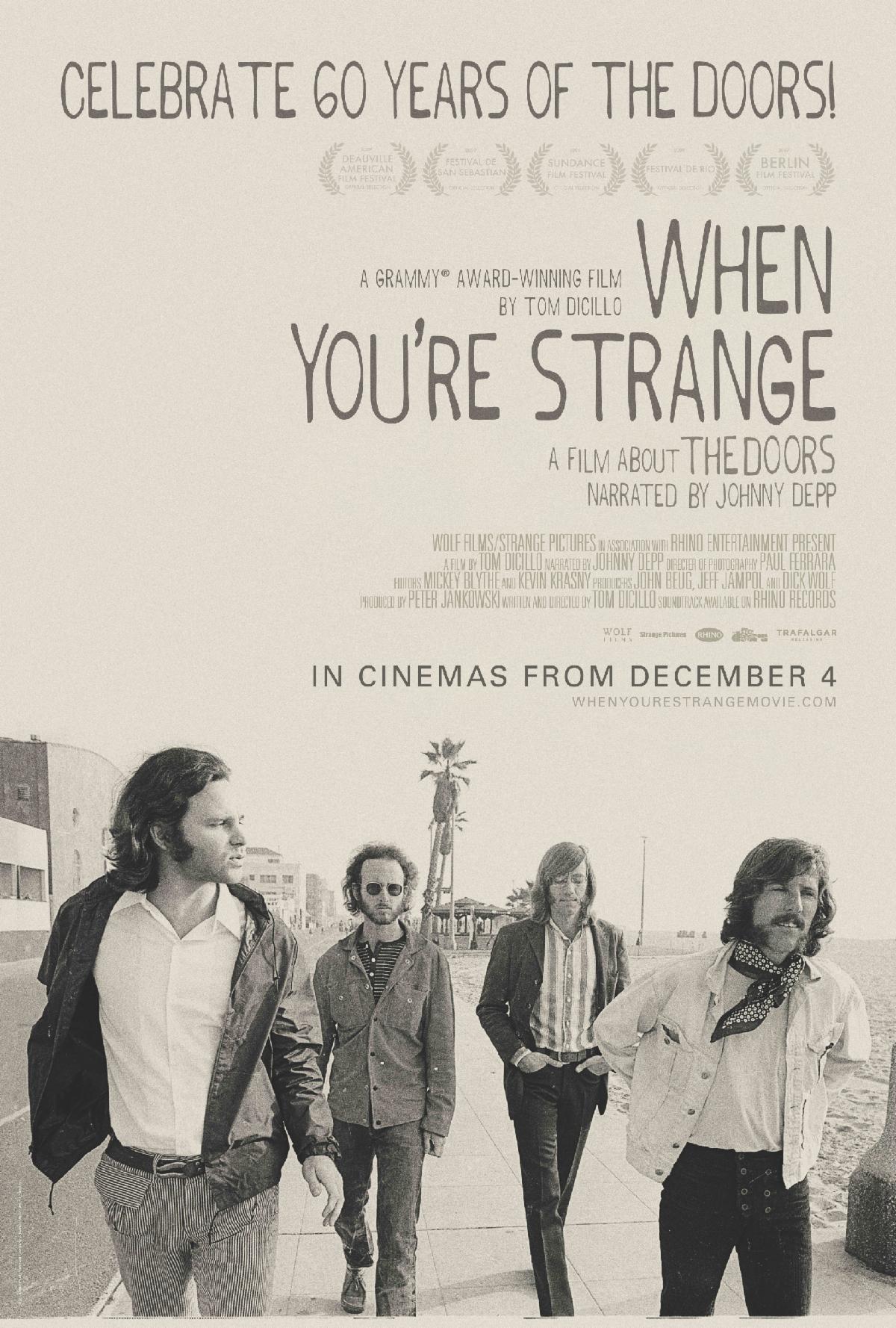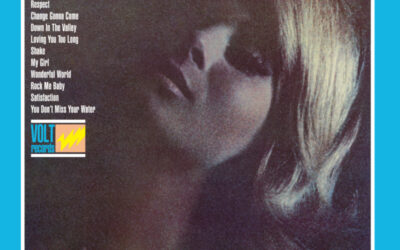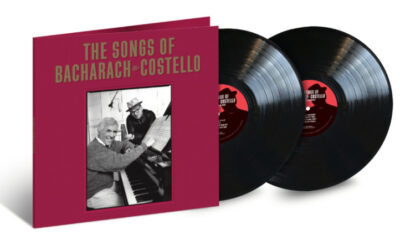Doors Documentary When You’re Strange Remastered in 4K Set
for theaters on December 4th and 6th.
Doors Catalog Dolby Atmos
By Harvey Kubernik
The Doors’ 60th anniversary celebration continues with the re-
release of Tom DiCillo’s Grammy award-winning documentary
film When You’re Strange. Remastered in 4K for the first time,
the film will feature an introduction from John Densmore and
Robby Krieger and the worldwide exclusive debut of a newly
recorded performance of “Riders on the Storm” featuring
Densmore, Krieger, and special guests in partnership with
Playing For Change. The film will be released worldwide in
theaters on December 4th and 6th. Visit
WhenYoureStrangeMovie.com.

The chemistry of four artists made The Doors one of America’s
most influential rock bands. With rare footage shot from their
formation in 1965 to Jim Morrison’s death in 1971, When
You’re Strange, Tom DiCillo’s Grammy award-winning film
narrated by Johnny Depp, follows the band through their
career, providing insight into the revolutionary impact of their
music. On the occasion of the band’s 60th anniversary, the film
will be presented in cinemas in 4K for the first time ever, and
feature a newly recorded performance of “Riders on the Storm”
featuring Densmore, Krieger, and special guests performing the
song in exotic locations around the world in partnership with
Playing For Change. From the first beat of the Lakota Drum
Group, grounding the song in ancestral rhythm, to magnetic
performances by Lukas and Micah Nelson, Sierra Ferrell, and
Rami Jaffee of the Foo Fighters, every note reminds us that
music is a universal language that serves as a bridge to unite a
global community.
The Doors took the stage on July 21, 1969 at the intimate Aquarius
Theatre on Sunset Boulevard for what would become one of the
most captivating—and criminally underrated—performances of
their career. Live at the Aquarius Theatre: The First Performance
captures Jim Morrison, Ray Manzarek, Robby Krieger, and John
Densmore in peak form: loose, loud, and locked in.
On November 21 st this concert will be available as a 180-gram
3-LP Set on Analogue Productions. This definitive edition, limited
to just 2,000 copies, is pressed at Quality Record Pressings and
features a 2016 mix by longtime Doors’ engineer Bruce Botnick,
who revisited the original 8-track analog masters for a stunning new
high-resolution transfer, using the same lacquer cut by Chris
Bellman who did the Record Store Day release in 2016. The result
is a crystal-clear, high-fidelity experience that transports listeners
straight into the charged atmosphere of that summer night in 1969.
“The new mix is a revelation,” says Botnick in the liner notes,
which also feature Robby Krieger, Ray Manzarek, John Densmore,
Danny Sugerman (who would go on to become the band’s second
manager), music critic and former editor of the Los Angeles Times
Robert Hilburn’s review of the show, which originally ran on July
28, 1969, and extensive production notes by Botnick. “It’s almost
like hearing the show for the first time. Using tools we didn’t have
in 2001, we were able to remove most of the hum and buzz that
permeated the original tapes,” says Botnick. “The resulting clarity
gives this concert new life—and as a bonus, side six features
material from the soundcheck that preceded the show, offering fans
something they’ve never heard before.”
The setlist spans the full range of The Doors’ alchemy—part
blues ritual, part psychedelic seance. From a swaggering “Back
Door Man” to a hypnotic, fever-dream reading of “The End,” the
performance unfolds like a trance. Morrison teeters between mystic
shaman and wry provocateur; Krieger’s guitar slices through the
haze; Manzarek’s keys swirl like a haunted carnival; and
Densmore’s pulse keeps it all tethered to earth. Live at the Aquarius
Theatre: The First Performance isn’t just a live album—it’s a
portal. A snapshot of a band at the height of its creative powers,
caught between chaos and transcendence. Pressed on the highest-
quality vinyl and restored with unprecedented clarity, this release
invites listeners to step back in time and experience the timeless
music of the Doors.
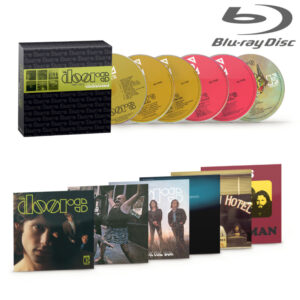
The Doors 60th anniversary celebration continued on October 24
with The Doors – 1967–1971, featuring Dolby ATMOS mixes of
the band’s six studio albums on Blu-ray for the first time. Available
exclusively through thedoors. com and Rhino.com, the set includes
Dolby ATMOS, 5.1 surround, and high-resolution stereo (192/24),
alongside remixes in 5.1 sur round sound and immersive 12-channel
Dolby Atmos versions of The Doors, Strange Days, Waiting for the
Sun, The Soft Parade, Morrison Hotel, and L.A. Woman. Each disc
is housed in a mini-jacket with the original album art work. Bruce
Botnick, the band’s engineer and mixer shared, “With Atmos,
having loudspeakers on the ceiling allows ‘Riders on the Storm’ to
come alive with rain and thunder, and on ‘Horse Latitudes,’ it
highlights the theatrical claustrophobia of Jim’s poetry.
In 2011 I spoke with Bruce Botnick and asked what astounds him
40 years later listening to his collaboration with producer Paul
Rothchild and the Doors.
“The thing that still works for me is, first and foremost, the music.
The musicianship. The performance. And all of those when these
guys connected as a unit and became unconscious is good or better
than anything I’ve ever heard. And that’s one of the things I have to
hand to my friend producer Paul Rothchild. That we went for
performance and tried to stay out of it not to become too technically
in the front of the albums that were manufactured.
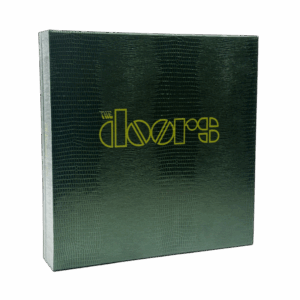
“In the case of the Doors, Paul was the man who drove the train
and kept it on the tracks. But the reality is that there were six of us
in the studio making these records together. And it wasn’t a matter
of one person ‘being the person.’ Paul never took that point. At
some point during the relationship and especially when Jim got
busted in Miami, where Paul had to step up and take more control.
Because somebody had too or otherwise it would have never got
done. But generally, his approach was to get the performance. And
we weren’t afraid of editing between takes. You get an amazing first
verse and second verse and a chorus and verse into the bridge and it
would sort of fall apart and we would grab another take that had it
and edited it all together. And it was about the performance. It
wasn’t about overdubbing. Because in the majority of what the
Doors played on their records was played live,” summarized
Botnick.
Over a 40-year period, I interviewed Ray Manzarek a dozen
times.
During 2003, I asked him about Botnick and Rothchild, who
helmed and guided the Doors in the recording studio.
“Paul Rothchild was the guy who had produced the Paul
Butterfield Blues Band and also Love, along with engineer Bruce
Botnick. The two of them did those albums together. So, it was a
great combination of six guys. That first album was basically the
four Doors and the two other Doors in the control room making the
sound. We made the music. They made the sound. And they did an
absolutely brilliant job. And it was a real joy and a great learning
experience.
“Rothchild and Botnick were two alchemists with sound. We
were the alchemical music makers but they were alchemists with
sound-adding a bit of this-a bit of that. Some reverb. Some high
end. Let’s hit it at 20k or 10k. Let’s dial in a bit of bass in there.
They were making this evil witches brew concoction as we went
along. And the sound just got better and better.”
In a 2009 interview, Ray and I discussed the 1969 Doors.
“After The Soft Parade and the Aquarius shows, we said, ‘Let’s
go back to the blues. Let’s get dark and funky for Morrison Hotel.’
[Issued in January 1970].
“The Doors are a collective journey that’s a good way of putting
it. It’s of course Jim Morrison as the charismatic lead singer, and
I’ve got to address Jim Morrison, but it’s Densmore, Krieger and
Manzarek (too). It’s a journey of these four guys, The Four
Horsemen of The Apocalypse, the diamond-shaped, no bass player
that made a five-point pentagram, shape of the diamond. It’s the
inverted pyramid, it’s an archetypal journey of four young men into
the unconscious, and coming out of that and creating a musical art
form.
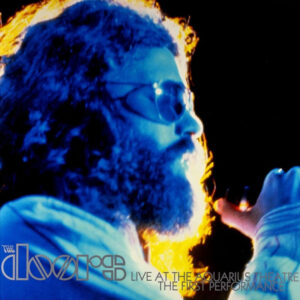
“The whole Doors’ organ sound, what makes that work, that’s
my whole Slavic upbringing. That’s being a ‘Polish Pianist.’ That’s
that dark Slavic Stravinsky, Chopin, that great mournful Bartok type
thing. Dark, mournful Slavic soul married so perfectly with the
southern gothic American Florida ‘Tennessee Williams’ boy poetry,
that the two of us went ‘Crunch!” and the whole thing came right
together perfectly.
“The Doors were never part of the folk-rock country rock/laid
back ‘Peaceful Easy Feeling’ of Los Angeles. The Doors were part
of Raymond Chandler, John Fante, Dalton Trumbo. It was the dark
streets and The Day Of The Locust, Miss Lonely Hearts. That’s
where The Doors come from. You see, nobody came here to make
it. Jim and I came to go to the UCLA School of film school, and
John [University High School] and Robby [Pacific Palisades High
School] are natives. Westside boys who surfed for God’s sake. The
Doors are L.A. The beach, and downtown L.A.,” Ray emphasized.
I remember mulling around the Aquarius on Sunset Blvd.
immediately after the Doors’ show and eating with future author
Jan Alan Henderson at The Hollywood Ranch Market.
I had to work earlier in the evening before their local appearance
at the West Los Angeles Junior College library in Culver City. The
school had just opened that month and I had to stack books and
magazines for summer school the next morning. It just wasn’t cool
for me to ask anyone on the campus to sub and do my $1.35 an hour
job in a newly opened facility.
Besides, in November 1968 I had already witnessed a Doors’
concert at The Inglewood Forum.
Also, at the time, I was still upset by the July 3, 1969 swimming
pool misadventure sudden death of Rolling Stones’ founder, Brian
Jones.
On July 21, 1969 when the Doors gave two performances at the
Aquarius Theatre in Hollywood, a poem Jim Morrison wrote for the
occasion, Ode to L.A. while thinking of Brian Jones was printed as a
four-page pamphlet on textured yellow paper with dark green ink,
and distributed to concert goers. Morrison’s work is a meditation on
the death of Jones.
Last decade I asked two friends of mine who attended the
Doors’ Aquarius Theatre booking to reminisce about the event:
Musician, singer/songwriter and actor, Bill Mumy and boxing
scholar and author Gene Aguliera.
Bill Mumy: The day before Neil Armstrong walked on the moon,
I was at the Aquarius Theatre with my Barnes and Barnes partner,
Robert Haimer, seeing the Doors. We attended the early show and
we got there early and secured seats in the very front row. The gig
was great. Morrison was focused and low-key, but he was a mighty
force. I thought he looked great. Thick beard, Mexican peasant shirt
and orange Aviator sunglasses. Ray wore a white T-shirt. I took
several photographs during the gig and have one of the few pics of
Morrison onstage looking directly into a camera lens. ‘Celebration
of the Lizard,’ ‘You Make Me Real’ and ‘Soul Kitchen’ were
highlights for me. The Doors were such a unique band. To this day,
I appreciate Morrison’s poetry and lyrics. He was a genuine artist.
They all were great and had musical styles that were/are instantly
recognizable. I consider myself fortunate to have been there.”
Gene Aguilera: As an inquisitive teenager with a wandering
mind, I used to love to look through the Los Angeles Free Press, the
infamous, radical, underground newspaper of the ’60s. One day,
there it was: a small ad saying the Doors were coming to the
Aquarius Theatre on July 21, 1969! Elektra Records, the Doors’
label, had begun a policy of renting the venue on Monday nights
(this being the dark night of the play Hair) to showcase their roster.
Naturally, I had to go, but was without wheels at that point; so, after
much begging (my 16th birthday was coming soon), my aunt, Julie
Gillis, agreed to take me and my two cousins to see one of my
favorite bands.
“As we departed East L.A., making our way toward the Sunset
Strip, my aunt Julie began to worry about taking her 11-year-old
daughter, Debbie, with us. Just a few months earlier in Miami, the
Doors’ lead singer Jim Morrison had been arrested for indecent
exposure onstage. She said, ‘What if he takes it out again? I don’t
want Debbie to see any of this.’ But it didn’t matter to me, there
was no other place in the world I would rather be. With its painted
psychedelic exterior and an exquisite art-deco interior, we had
arrived at the Aquarius Theatre and sat about halfway up from the
stage. With the band still reeling from the Miami bust, an aura of
danger lurked thick in the air; when suddenly to the stage strolls a
dwarf (adding to the circus-like atmosphere), named Sugar Bear, to
announce the band, ‘Ladies and Gentlemen… the Doors!’
“We were now ready for the Lizard King. Jim Morrison looked
so much different in person than the album covers I had studied; he
arrived with sunglasses, a thick beard, and a paunch around his
waist. But for this hometown ‘live’ recording Morrison introduced
an edgy new trick to his usual theatrical drama. With the spotlight
on, Morrison appeared incredulously high up in the rafters, grabbed
a rope and swung to the stage, Tarzan-style, leaving the entire
crowd gasping at what they saw. My aunt Julie had her coat ready to
cover Debbie’s eyes (if Jim was going to whip it out, as he did in
Miami), but that never happened, thank God, Morrison instead
throwing Styrofoam balls out to the crowd.
“In my youthful excitement, I ran toward the stage and caught a
few. A pretty hippie girl next to me was disappointed at not
catching anything, so I gave her one, and in turn, she gave me a
great big kiss; witnessed by all my group. This was the dawning of
the age of Aquarius.”
The Doors’ Live At The Aquarius Theatre – The First
Performance
Track List
Side 1
- Tuning
- Jim’s Introduction
- Back Door Man
- Break On Through
- What Do We Do Next?
- Soul Kitchen
Side 2
- You Make Me Real
- Tuning
- I Will Never Be Untrue
- The Crowd Humbly Requests
- When The Music’s Over
Side 3
- Universal Mind
- The Crowd Requests Their Favorites And Tuning
- Mystery Train / Crossroads
- Build Me A Woman
Side 4
- Tuning
- Who Do You Love (False Start)
- Who Do You Love
- Light My Fire
Side 5
- The Crowd Requests More
- The Celebration Of The Lizard
Side 6
- Soundcheck
Produced and Mastered by Bruce Botnick
Recorded July 21, 1969 at The Aquarius Theatre in
Hollywood, California
“I knew Jim was a great poet,” Ray Manzarek reiterated to me
one afternoon in 1995 as we watched a UCLA NCAA
championship basketball game on television with my brother
Kenneth, father Marshall and Burton Cummings of the Guess Who.
“See that’s why we put the band together in the first place. It was
going to be poetry together with rock ‘n’ roll. Not like poetry and
jazz. Or like it, it was poetry and jazz from the ‘50s, except we were
doing poetry and rock ‘n’ roll. And our version of rock ‘n’ roll was
whatever you could bring to the table. Robby, bring your Flamenco
guitar, Robby bring that bottle neck guitar, bring that sitar tuning.
John, bring your marching drums and your snares and your four on
the floor. Ray, bring your classical training and your blues training
and your jazz training. Jim, bring your Southern gothic poetry, your
Arthur Rimbaud poetry. It all works in rock ‘n’ roll. Jim was a
magnificent poet.”
In July 1995, at the MET Theatre on Oxford Avenue in East
Hollywood, I produced and co-curated a month-long Rock and Roll
in Literature series with director Darrell Larson and associate
producer Daniel Weizmann.
Manzarek, Densmore, and Krieger reunited for us and played
“Peace Frog,” “Love Me Two Times,” and “Little Red Rooster” on
July 8. Music journalist Kirk Silsbee read from Art
Pepper’s Straight Life, John Densmore recited an entry from his
new novel, and actor Michael Ontkean recited Ode to L.A. by Jim
Morrison.
Last decade I discussed the Doors and Morrison’s relationship to
cinema with novelist Weizmann.
He subsequently emailed me Motel Money Murder Madness: Jim
Morrison and the Noir Tradition.
“Some like to make fun of Jim Morrison for his poetic
ambitions—he was young, ultra-serious, and at times he had the
somber college student’s yen for Hamlet-like navel-gazing. What’s
more, like Michael Jackson and Elizabeth Taylor, the force of
Morrison’s stardom at times threatens to overshadow his artistic
gifts. Patti Smith recently wrote that she felt ‘both kinship and
contempt’ watching Morrison perform. But Jim Morrison’s lyrics
did introduce a whole new and highly literary sensibility to pop
music—the Southern California noir of Raymond Chandler and the
Southern Gothic tradition of William Faulkner. And pop music has
never really been the same since.
“Of course, new things were already happening to the song lyric
before Morrison made his move: Dylan shocked the airwaves with
biblical passion and Whitmanesque frenzy. The Beatles followed
with colorful utopian imagery that had roots in James Joyce, Lewis
Carroll, and Edward Lear’s nonsense verse. But nobody brought the
gravity, the hard realism and the psychological pressure of noir to
the popular song before Jim. He represented a major leap toward
adulthood in ’67 and the boomers flipped for it. After a youth
saturated with sunshine and goody-goody-gumdrops consumerism,
they had secretly been craving just such a counter-move.
“The first album’s shadowy album cover and billboard, shot by Guy
Webster, was a knowing nod to noir film posters like Out of the
Past and In a Lonely Place. And Jim’s crooner voice and movie-star
good looks defied the rock template, as well. But most of all, the
words, their impressionistic, nightmare-like alienation, were strange
and yet instantly recognizable.
“We can’t know exactly what inspired Morrison to fuse the noir
dreamscape to the popular song… but he was a military brat, raised
in Florida and New Mexico. The South, with its backwoods quiet,
its open highways, its malevolence, and its anti-culture, was in his
bones. Throw a UCLA dose of Nietzsche, Rimbaud, the exotica of
Eastern philosophy, Jungian psych, and the Native American
tragedy into the mix, and you’ve got a potion powerful enough to
challenge the lyrical norms as deeply as the sound of Hendrix’s
guitar did.
“One of the last of the Venice Beach beatniks, Morrison self-
published slim volumes of verse, even at the height of his rock
stardom. He certainly had a hard time straddling his roles as
shaman, youth leader, pop icon, and serious artist. But he struggled
in earnest, and it’s impossible to talk about the Los Angeles
tradition that stretches from Chandler, West and Fante to Didion
herself, Bukowski and beyond, without seeing Morrison’s part.
“What’s more, for better or worse, whole music genres have
Morrison to thank for forging darkness to the pop song. Bowie’s
Berlin Trilogy, post-punk, and even grunge couldn’t have happened
without him. Some, like the Cult, seemed only to get the histrionics;
others, like Jane’s Addiction, reached harder for poetry but lacked
the warmth of Morrison’s highly intimate voice. Because, in the
end, despite the shaman poses, the billboards and the spotlights,
Morrison really portrayed himself as a lone human, in true noir
fashion, struggling through the night. He wrote from the personal
inner space that is poetry.”
On January 28, 2018, I attended the memorial tribute and service to
Rabbi Isaiah “Shy” Zeldin at the Stephen Wise Temple in the Bel-
Air neighborhood of Southern California. Rabbi Eli Herscher
praised Zeldin’s spiritual and visionary leadership in 1964 as he
established an open-minded religious and musical community in the
region, perhaps a mile from the UCLA campus where Manzarek
and Morrison in 1964 were enrolled as students. From the Bima,
Herscher encouraged the congregation of mourners “that today,
memory is the only agenda.”
The Rock and Roll Hall of Fame’s Library & Archives on July 10,
2017, invited me to be a guest speaker in their Author Series in
Cleveland, Ohio. Before my appearance, one of the curatorial
assistants took me into the private air-conditioned storage locker
room not open to the viewing public. “We knew you were coming
today and pulled out some specific items we wanted you to see.”
I was given an envelope containing Jim Morrison’s UCLA diploma.
It was a signal.
Time to fly back home to Los Angeles. I was immediately reminded
of Morrison’s lyric line in “Celebration of the Lizard”: “Tomorrow
we enter the town of my birth. I want to be ready.”
(Harvey Kubernik is the author of 20 books, including 2009’s
Canyon Of Dreams: The Magic And The Music Of Laurel Canyon,
2014’s Turn Up The Radio! Rock, Pop and Roll In Los Angeles
1956-1972, 2015’s Every Body Knows: Leonard Cohen, 2016’s
Heart of Gold Neil Young and 2017’s 1967: A Complete Rock Music
History of the Summer of Love. Sterling/Barnes and Noble in 2018
published Harvey and Kenneth Kubernik’s The Story Of The Band:
From Big Pink To The Last Waltz. In 2021 the duo wrote Jimi
Hendrix: Voodoo Child for Sterling/Barnes and Noble.
Otherworld Cottage Industries in 2020 published Harvey’s Docs
That Rock, Music That Matters. His Screen Gems: (Pop Music
Documentaries and Rock ‘n’ Roll TV Scenes) is scheduled for a late
2025 publication.
Harvey Kubernik wrote the liner notes to CD re-releases of
Carole King’s Tapestry, The Essential Carole King, Allen
Ginsberg’s Kaddish, Elvis Presley The ’68 Comeback Special, The
Ramones’ End of the Century and Big Brother & the Holding
Company Captured Live at The Monterey International Pop
Festival. During 2006 Kubernik appeared at the special hearings by
The Library of Congress in Hollywood, California, discussing
archiving practices and audiotape preservation. In 2017 he lectured
at the Rock and Roll Hall of Fame in Cleveland, Ohio, in their
Distinguished Speakers Series. Amidst 2023, Harvey spoke at The
Grammy Museum in Los Angeles discussing director Martin
Scorsese’s The Last Waltz music documentary.
Kubernik is in The Sound of Protest documentary now airing on
the Apple TVOD TV broadcasting service. https://tv.apple.com › us
› movie › the-sound-of-protest. Director Siobhan Logue’s endeavor
features Smokey Robinson, Hozier, Skin (Skunk Anansie), Two-
Tone’s Jerry Dammers, Angélique Kidjo, Holly Johnson, David
McAlmont, Rhiannon Giddens, and more. Harvey is interviewed
along with Iggy Pop, Bruce Johnston, Johnny Echols, the Bangles’
Susanna Hoffs and Victoria Peterson, and the founding members of
the Seeds in director Neil Norman’s documentary The Seeds – The
Seeds: Pushin’ Too Hard now streaming online on Vimeo. This
November 16, 2025, a DVD/Blu-ray is scheduled for release via the
GNP Crescendo Company).

